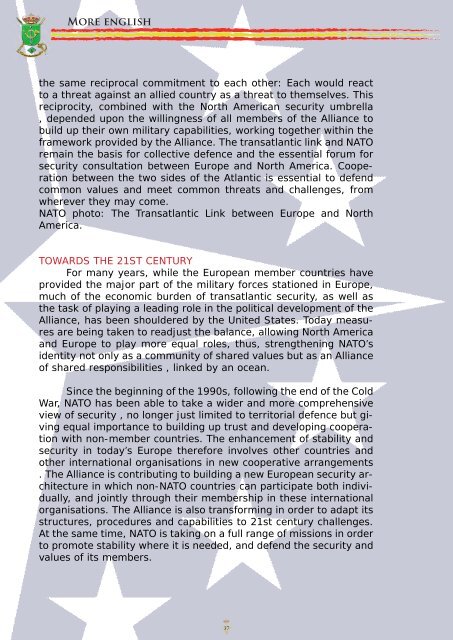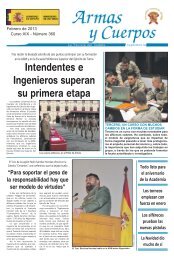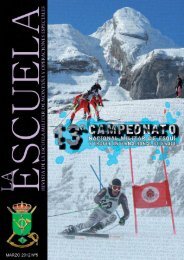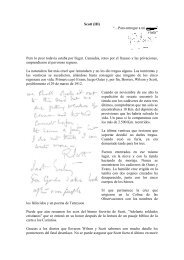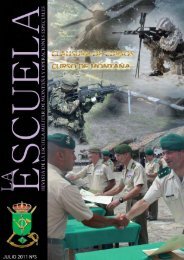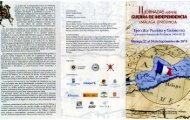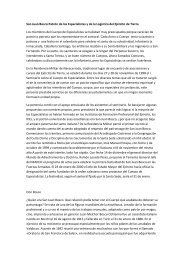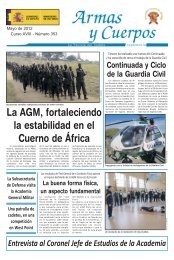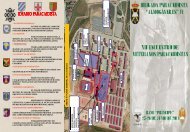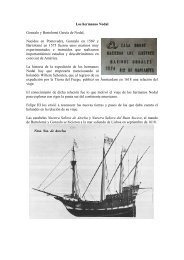4 - Ejército de tierra
4 - Ejército de tierra
4 - Ejército de tierra
Create successful ePaper yourself
Turn your PDF publications into a flip-book with our unique Google optimized e-Paper software.
More english<br />
the same reciprocal commitment to each other: Each would react<br />
to a threat against an allied country as a threat to themselves. This<br />
reciprocity, combined with the North American security umbrella<br />
, <strong>de</strong>pen<strong>de</strong>d upon the willingness of all members of the Alliance to<br />
build up their own military capabilities, working together within the<br />
framework provi<strong>de</strong>d by the Alliance. The transatlantic link and NATO<br />
remain the basis for collective <strong>de</strong>fence and the essential forum for<br />
security consultation between Europe and North America. Cooperation<br />
between the two si<strong>de</strong>s of the Atlantic is essential to <strong>de</strong>fend<br />
common values and meet common threats and challenges, from<br />
wherever they may come.<br />
NATO photo: The Transatlantic Link between Europe and North<br />
America.<br />
TOWARDS THE 21ST CENTURY<br />
For many years, while the European member countries have<br />
provi<strong>de</strong>d the major part of the military forces stationed in Europe,<br />
much of the economic bur<strong>de</strong>n of transatlantic security, as well as<br />
the task of playing a leading role in the political <strong>de</strong>velopment of the<br />
Alliance, has been shoul<strong>de</strong>red by the United States. Today measures<br />
are being taken to readjust the balance, allowing North America<br />
and Europe to play more equal roles, thus, strengthening NATO’s<br />
i<strong>de</strong>ntity not only as a community of shared values but as an Alliance<br />
of shared responsibilities , linked by an ocean.<br />
Since the beginning of the 1990s, following the end of the Cold<br />
War, NATO has been able to take a wi<strong>de</strong>r and more comprehensive<br />
view of security , no longer just limited to territorial <strong>de</strong>fence but giving<br />
equal importance to building up trust and <strong>de</strong>veloping cooperation<br />
with non-member countries. The enhancement of stability and<br />
security in today’s Europe therefore involves other countries and<br />
other international organisations in new cooperative arrangements<br />
. The Alliance is contributing to building a new European security architecture<br />
in which non-NATO countries can participate both individually,<br />
and jointly through their membership in these international<br />
organisations. The Alliance is also transforming in or<strong>de</strong>r to adapt its<br />
structures, procedures and capabilities to 21st century challenges.<br />
At the same time, NATO is taking on a full range of missions in or<strong>de</strong>r<br />
to promote stability where it is nee<strong>de</strong>d, and <strong>de</strong>fend the security and<br />
values of its members.<br />
37


